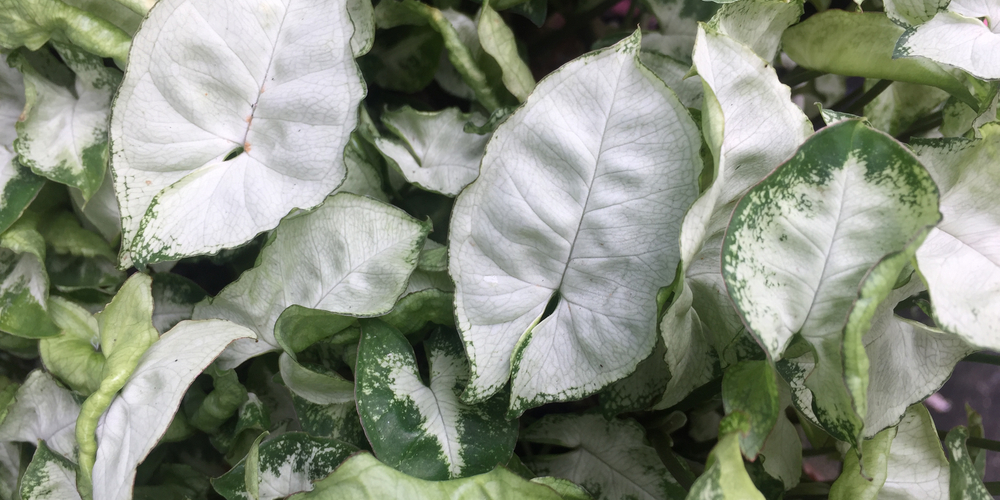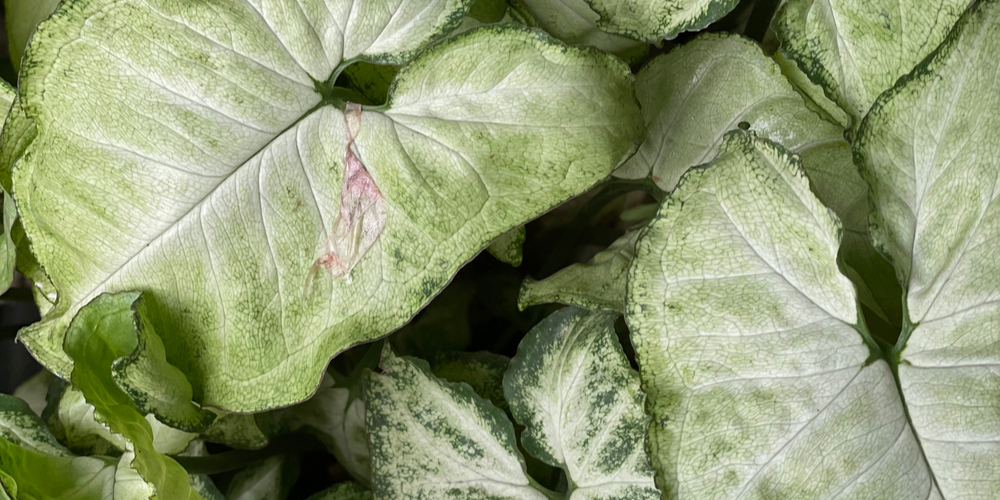Arrowhead vines or syngonium holly at first look is a well-behaved, compact indoor plant. Just as the name suggests, the leaves of the plants spread in a different direction. There are also varieties of this plant, and they are more compact than the other.
But the White Butterfly will spread the leaves in every direction. You must not hold back when pruning these heavy growers, as these plants like to be tamed, and only then they will take on the full growth. There are different varieties of Syngonium, and they are easy to take care of as long as you water them regularly.
These plants require low light and these houseplants will grow up virtually just anywhere in your house. One of the best things about these plants is they have different patterns and colors, so you will always have the option to choose from.
Another best attribute of arrowhead plants is they will grow any way you desire. You can encourage them to grow on the wall or a stake, the vines will attach easily. However, you have to tie older saplings to give them support. This way the smaller plants will grow by themselves.
How to care for Syngonium Holly
Syngonium holly must be planted in acidic and well-draining soil, and you have to keep the temperature from 60F to 85F. You have to water them infrequently but do this carefully once the top part of the soil dries out. You have to fertilize the soil monthly once the growing season arrives. These vines can be poisonous if they are consumed, so you need to be very careful and keep them away from children and pets.
Sunlight
These plants are low-light tolerant, and they will maintain their beautiful colors as they will grow faster. You have to keep them under indirect to medium bright light. Direct sunlight will damage the leaves. These plants also grow under artificial light, if you have limited space. You have to move the pot towards the light source during the colder season and rotate the plant while watering them. This will influence them to become a full-grown plants.
Watering
This plant has a Medium drought tolerance but requires regular watering. Furthermore, it will allow you some mistakes of not watering them for some days. But if you need better performance, you need to regularize watering.
During the summer and springtime, the plant grows automatically, you just have to water them once the top layer of the soil gets dry. To understand the dryness of the top one inch, you have to stick your fingers into it, and if it’s dry, then you have to sprinkle water. You have to follow this method once a week and irrigate until the water starts to drop down the drain holes at the bottom of the pots.
The growth of arrowhead plants slows down once the winter season comes, this means you have to water them infrequently. However, you have to check if the soil is too dry, if it is then apply water, which will be in every two weeks.
Pruning
Arrowhead plants grow the most in the summer months, and this is the ideal time for pruning. You can give it the shape you want, and make sure to do the trimming when the plant is growing and not in the winter season. Otherwise, the leaves and stems will get damaged.
To start pruning you have to sanitize the blades, so it doesn’t transfer any disease to the plants. You just have to rub alcohol on the tool blades and they will be clear of any kind of residues. You can also cut the plant to get new saplings.
Humidity
Getting the humidity level right is the most important thing for arrowhead plants. As you are keeping them indoors, these plants need proper humidity, which should be 50%. You can mist the plants, or use a room humidifier for them.
You must also check the USDA climate zones map to check if you can grow them outside too. There are some ways to boost the humidity of these plants they are:
- Mist them two times a week. You can have a spray bottle and gently use it on the leaves.
- You can use a pebble tray. Fill the tray halfway with water and place the pit on it.
- You can also use a room humidifier for misting the plants.
- Try wiping the leaves with a damp cloth mad continue this two times a week.
Fertilizer
You need to fertilize these plants monthly and use balanced diluted houseplant fertilizers. Syngonium holly isn’t a big feeder, but they need minerals and nutrients to grow. You must avoid feeding the plants during autumn because in the colder months they will become dormant, which means they won’t need food.
Soil Type
Arrowhead plants require acidic soil with a pH level of 5.5 to 6.5. The soil in the pot must have better nutrients and a good drainage system. Make sure the soil isn’t soggy or overly damp; you can make a mix of perlite, peat moss, and soil.
There are a few ways you can tell that you need to change the soil of the plants, they are:
- You have to water the plant only a fewer times because the water isn’t evaporating faster
- Water is getting stored on the surface of the soil
- Water is taking a long time to drain away from the holes in the pot
- The plants aren’t growing the way they should.
Syngonium Holly: Propagation
The best way you can propagate these plants is by cutting the stems. You just need to cut a part of the plant that is closer to the roots, and ensure that there are at least three to four leaves on them. Now place the cut stem in a water-filled container, and then wait for some weeks for roots to appear from it. After the roots are there, you can transfer the plant into a small pot, mist the sapling and place it under medium bright light.
Conclusion
Syngonium Holly is an easy plant to grow in your home. It will not require everyday watering or direct sunlight. You just have to take care of the pruning, fertilizer, and other things mentioned in the article, and these plants will grow faster.

